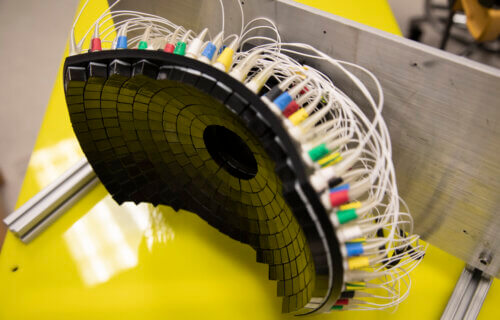ANN ARBOR, Mich. — A new cancer treatment could break the sound barrier. Researchers from the University of Michigan are showing how noninvasive sound waves can successfully destroy tumors in mice by tearing down cancer cell walls. The novel treatment could provide an alternative option to patients who cannot tolerate the side effects associated with radiation and chemotherapy.
The sound technique is called histotripsy and has two ways to break up cancerous growths. First, the sound waves cause physical destruction of tumors, including their cell wall that acts like a cloak to avoid detection from the body’s immune system. Once the cloak is down, the immune system has an easier time detecting these evasive tumors and mounting a response against them.
A 2022 study on rats showed the effectiveness of noninvasive sound waves in breaking up liver tumors. Even when sound waves were applied to only 50% to 75% of the mass, it was able to cause a complete disappearance of the tumor. This was because the soundwaves kickstarted the immune response which prevented the tumor from further spreading in 80% of the animals. However, until this current study, the researchers did not fully understand how sound waves activated the immune response.
“We found that histotripsy somehow not only kills cancer cells, but causes them to undergo a unique pathway of cell death that draws the attention of the immune system,” explains Clifford Cho, the C. Gardner Child professor of surgery and vice chair of surgery at the University of Michigan and senior study author in a statement.

In the current study, the team gave mice genetically identical tumors and applied the sound wave on them. After destroying a tumor in one mouse, the team took samples of the tumor, mixed it up, and injected it into another mouse. They found that both mice developed immune protection against the cancer. “Injecting the debris into a second mouse had almost a vaccine-like property,” adds Zhen Xu, a professor of biomedical engineering at the University of Michigan and an inventor of the histotripsy approach. “Mice that received this debris were surprisingly resistant to the growth of cancers.”
Analyzing the samples also allowed the team to find exposed tumor antigens—proteins only found in cancer cells that are usually hidden behind cell walls. This is a different approach from chemotherapy and radiation as they usually destroy antigens with the tumor. After the sound wave attack, the tumor antigens are exposed and released into the body, which is easily noticed by the body’s immune system.
“With histotripsy, we’re not destroying the antigens, we’re releasing them while killing the tumor cells,” says Xu. “Once they’re no longer hidden, the body can see them and attack them.”
The study is published in the journal Frontiers in Immunology.

We’re always hearing about these new treatments.
When will they let humans try this? This is Awsome
Is this like the Rife machine invented many years ago?
Using the frequency of sound waves instead of low frequency electromagnetic fields like Royal R. Rife did. The medical industrial complex put Rife out of business. Let’s see how far this new technique is allowed to go.